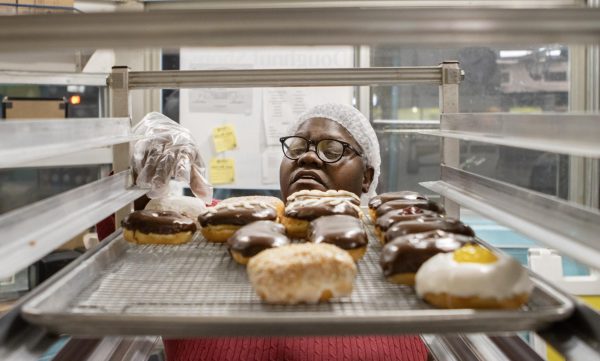Today more than sea of green
Whether it be shamrocks, leprechauns or simply green beer, there are many things highly commercialized that people associate with St. Patrick’s Day. And, typically, people don’t exactly think of the actual saint or what he did to become the patron saint of Ireland when they think of the day commemorating the Irish saint.
Before you whip out the ‘kiss me, I’m Irish’ t-shirts or dye your hair green, let me refresh your memory on just who St. Patrick really was.
Born in Wales, around AD 385, Maewyn (the saint’s given name until he later picked up the Christian name Patrick), acted far from saintly up until the ripe age of 16. He had considered himself a pagan up until this time, according to wilstar.com/holidays/patrick.htm.
Before he was sold into slavery by Irish marauders, he didn’t have a substantially close relationship with God. After being held as a slave for six years, he eventually escaped and studied monastery under St. Germaine, a bishop at the time. He subsequently returned to Ireland to attempt to convert the Irish country to Christianity while also establishing monasteries across the country.
His mission in Ireland lasted for 30 years before Patrick retired. He died on March 17 in AD 461. St. Patrick’s Day was officially celebrated in the United States in 1737.
The fact that St. Patrick’s Day is so publicized and commercialized in the United States can be viewed as both a positive and negative thing.
The day is no doubt special to people, especially those of the Irish heritage, but unfortunately, it seems the day is centered around too many things other than the saint. However, the fact that stores cash in on the day with green t-shirts or shamrock shakes is inevitable, and ultimately it helps make the day more recognizable while encouraging people of all descents to celebrate their heritage.
Since the day is so highly promoted and celebrated nation-wide with parties, parades and traditional meals often consisting of corn beef and cabbage, the day is one I’ve always relished. When I reminisce about past St. Patrick’s Days, my mind is flooded with memories of drinking green fruit punch and exchanging shamrock stickers with friends in grade school.
And although I admit it’s easy to focus on the day and all the sea of things green it represents instead of thinking about the saint and all he did to make the world a better place, without all the commercialization I don’t think the day would have nearly the significance it does today.
Although St. Patrick’s Day is commercialized as an Irish holiday, it is uplifting to see the day celebrated by people of various nationalities. St. Patrick may have been an Ireland native, but most importantly, he is someone who made a difference in the lives of others. And it is encouraging to see his day celebrated by all types of people.
So gulp down your shamrock shakes, snarf up your green-frosted cookies and chug your green beer, but don’t forget all this day represents and the saint who made it what it is today.












































